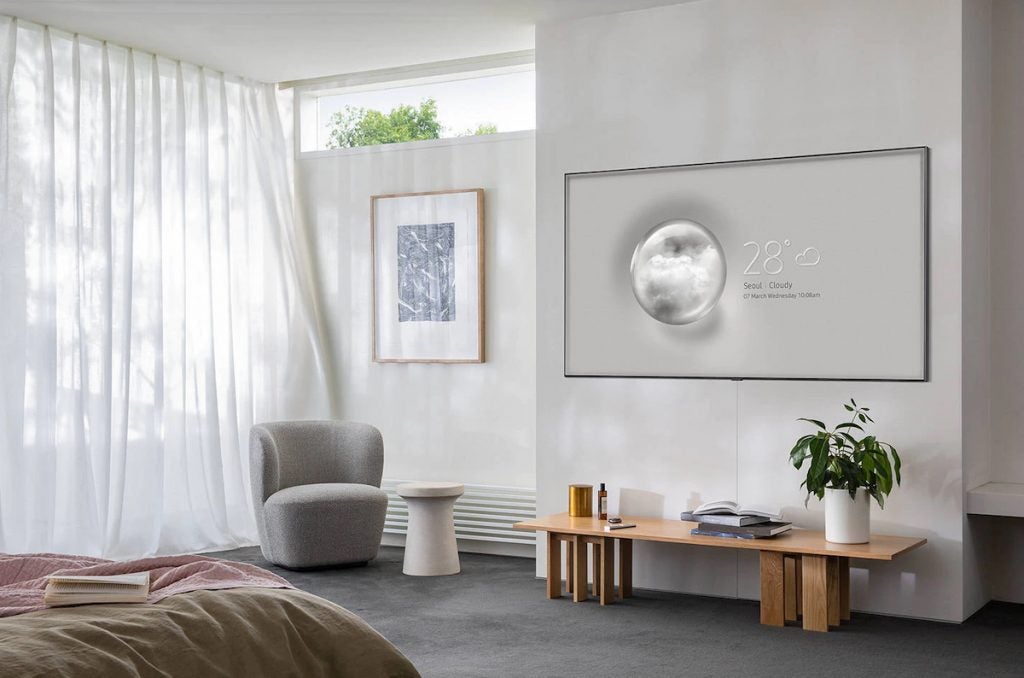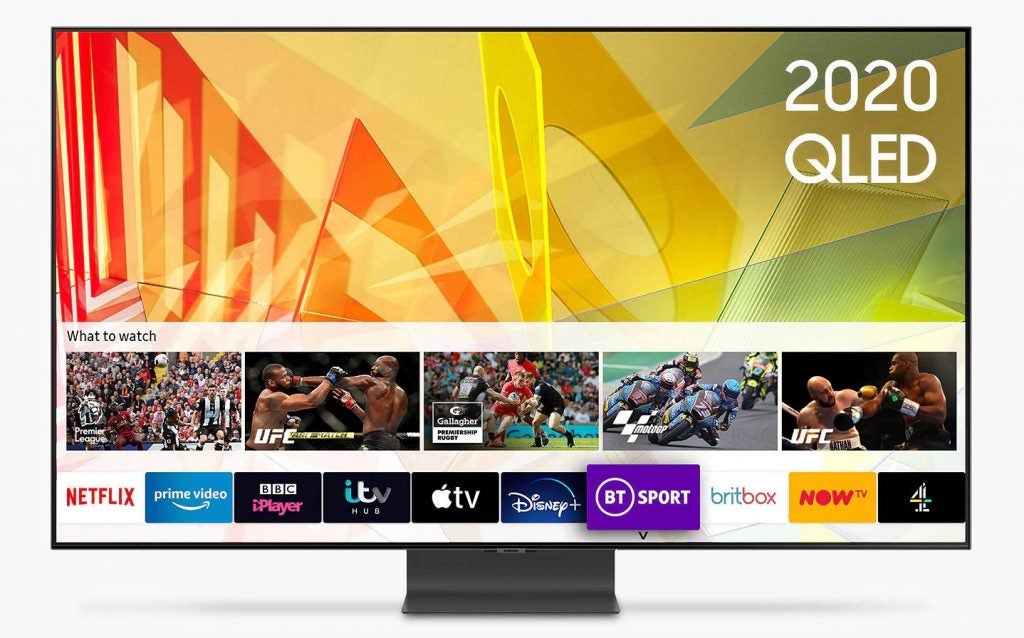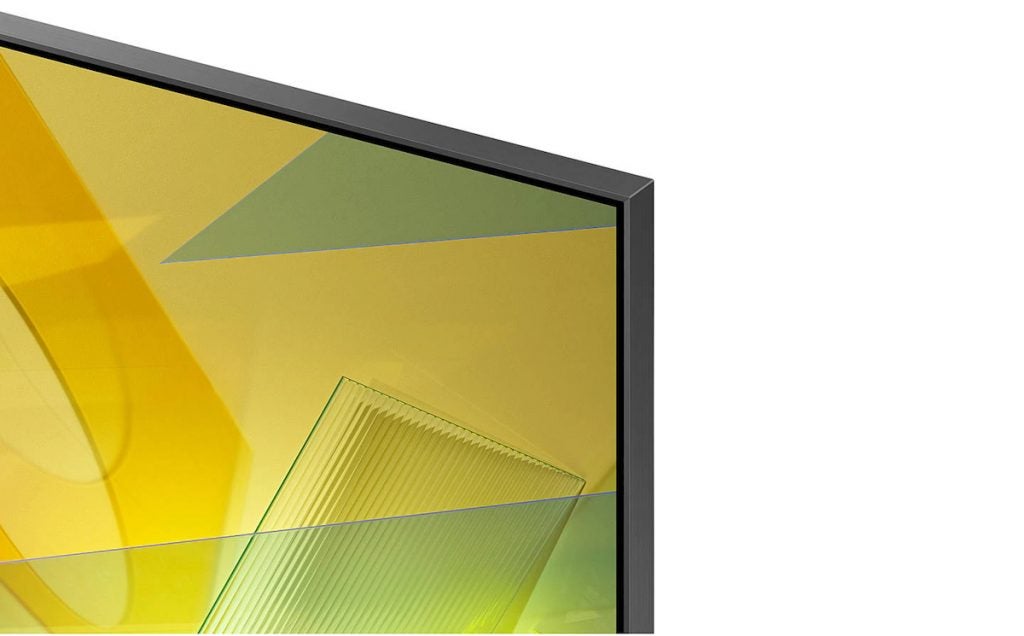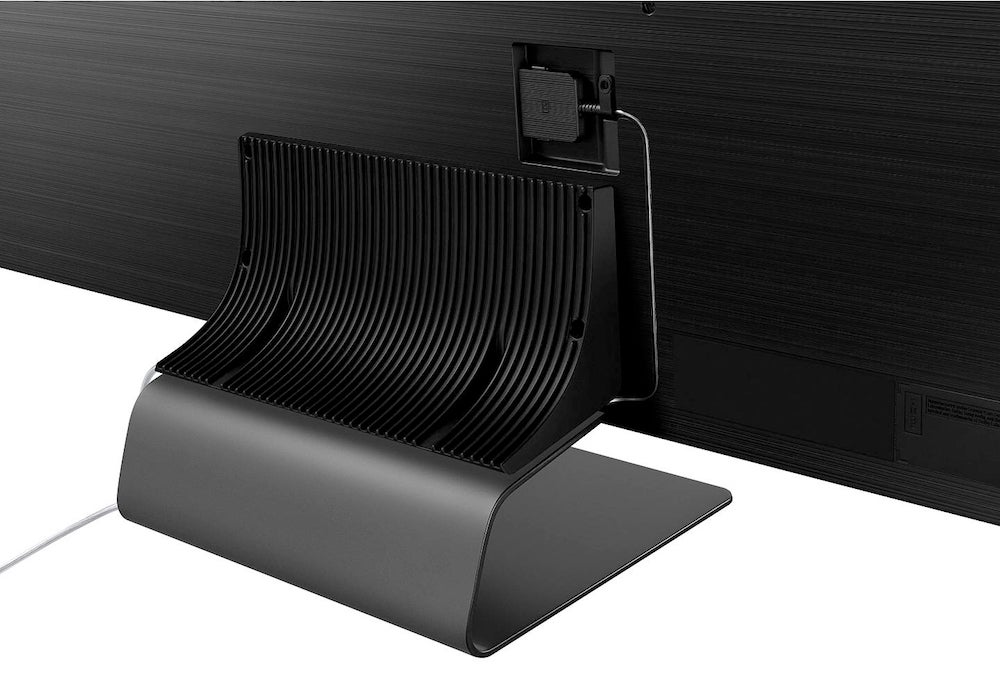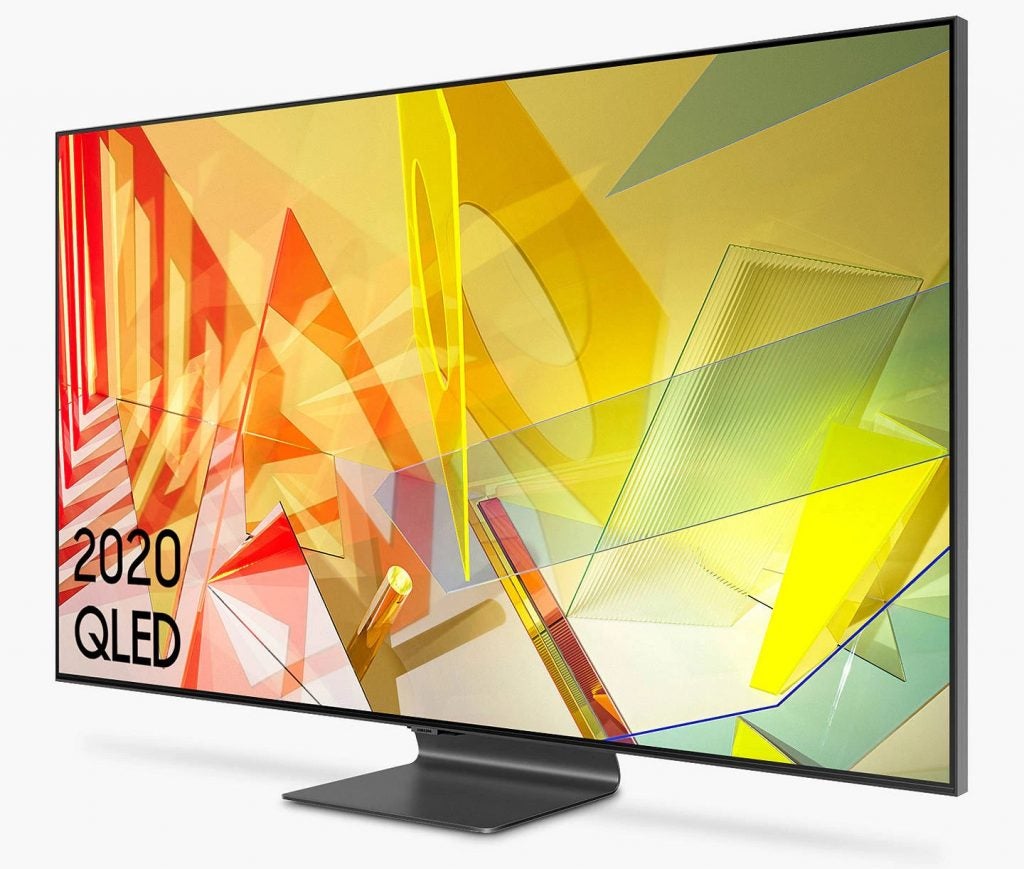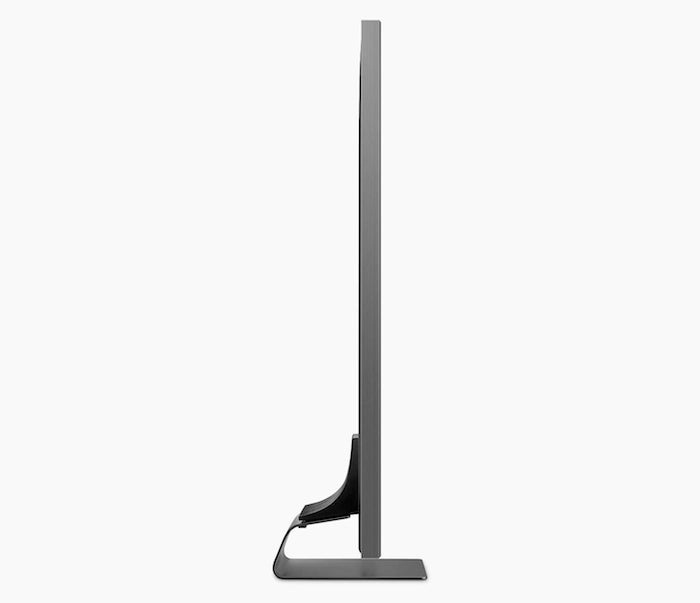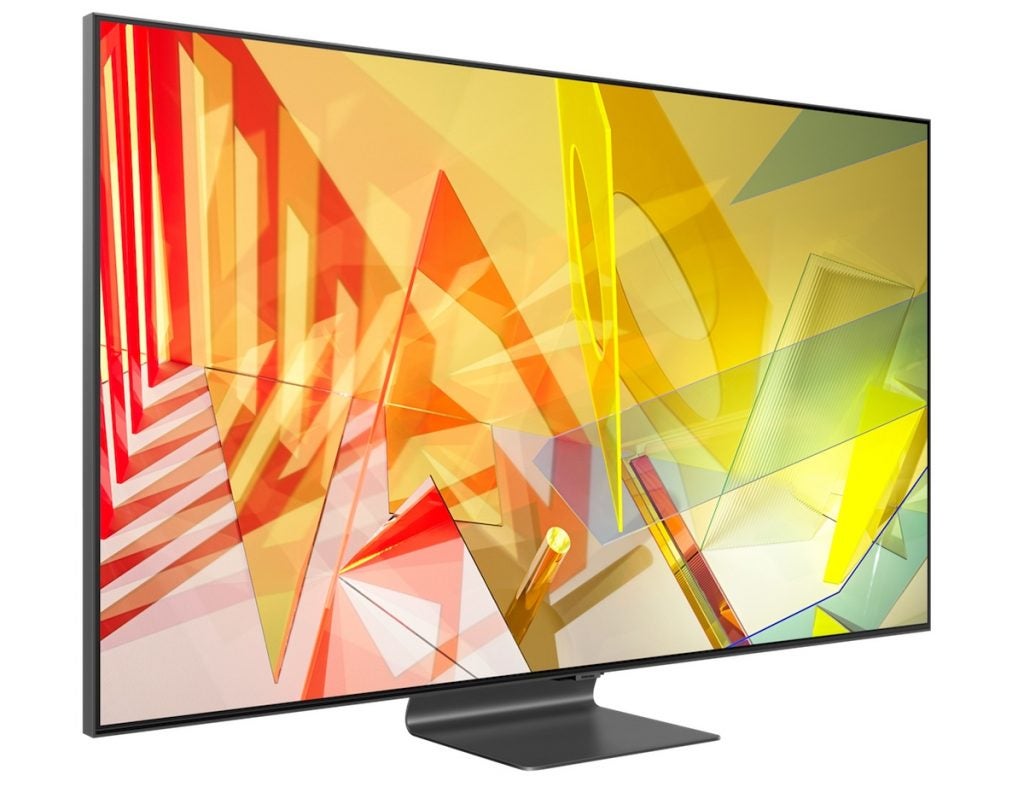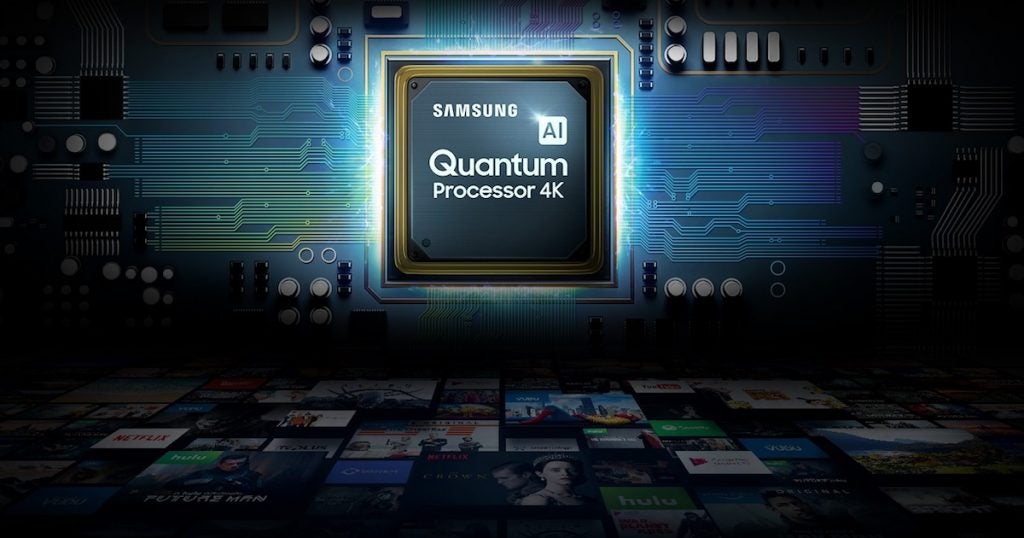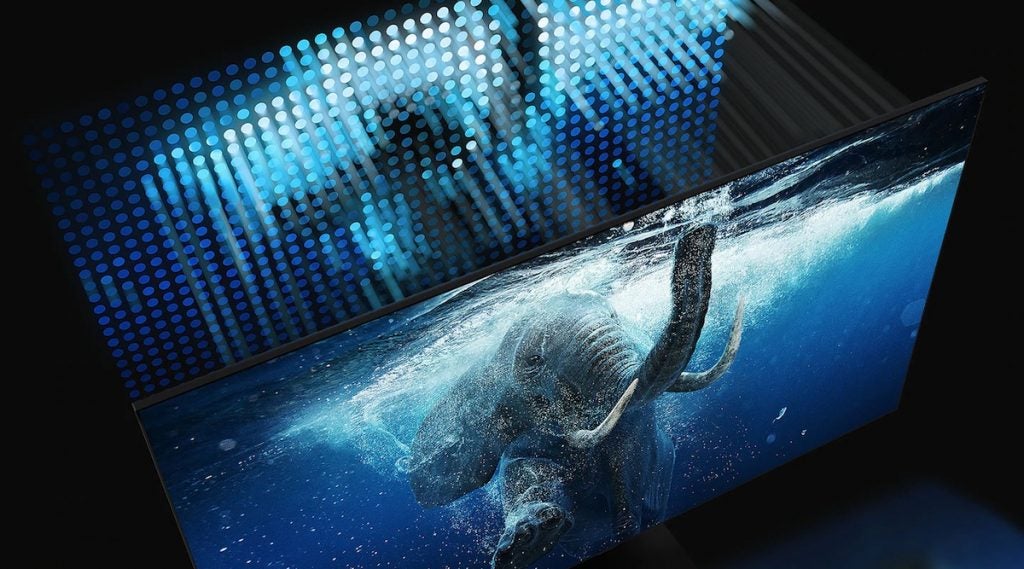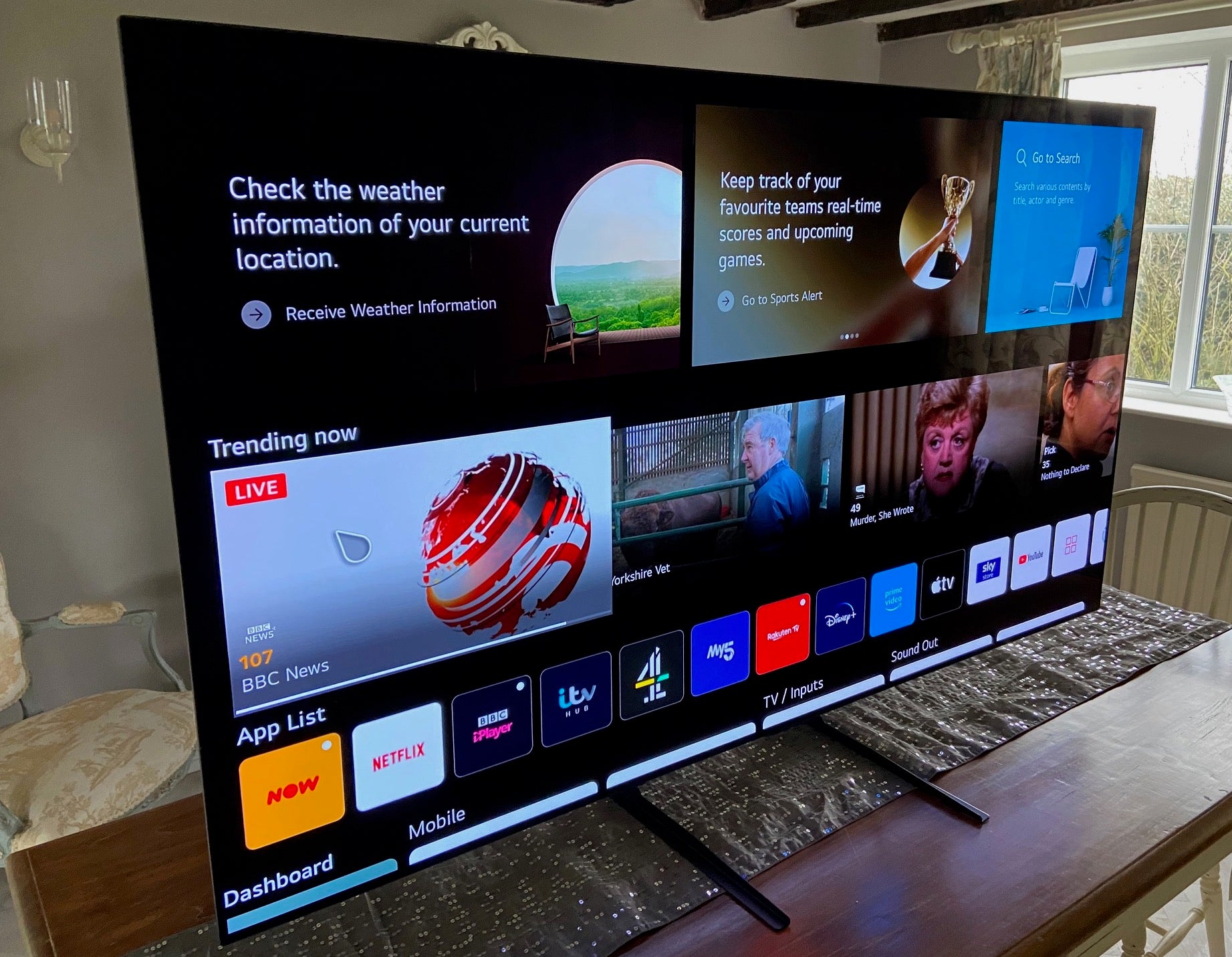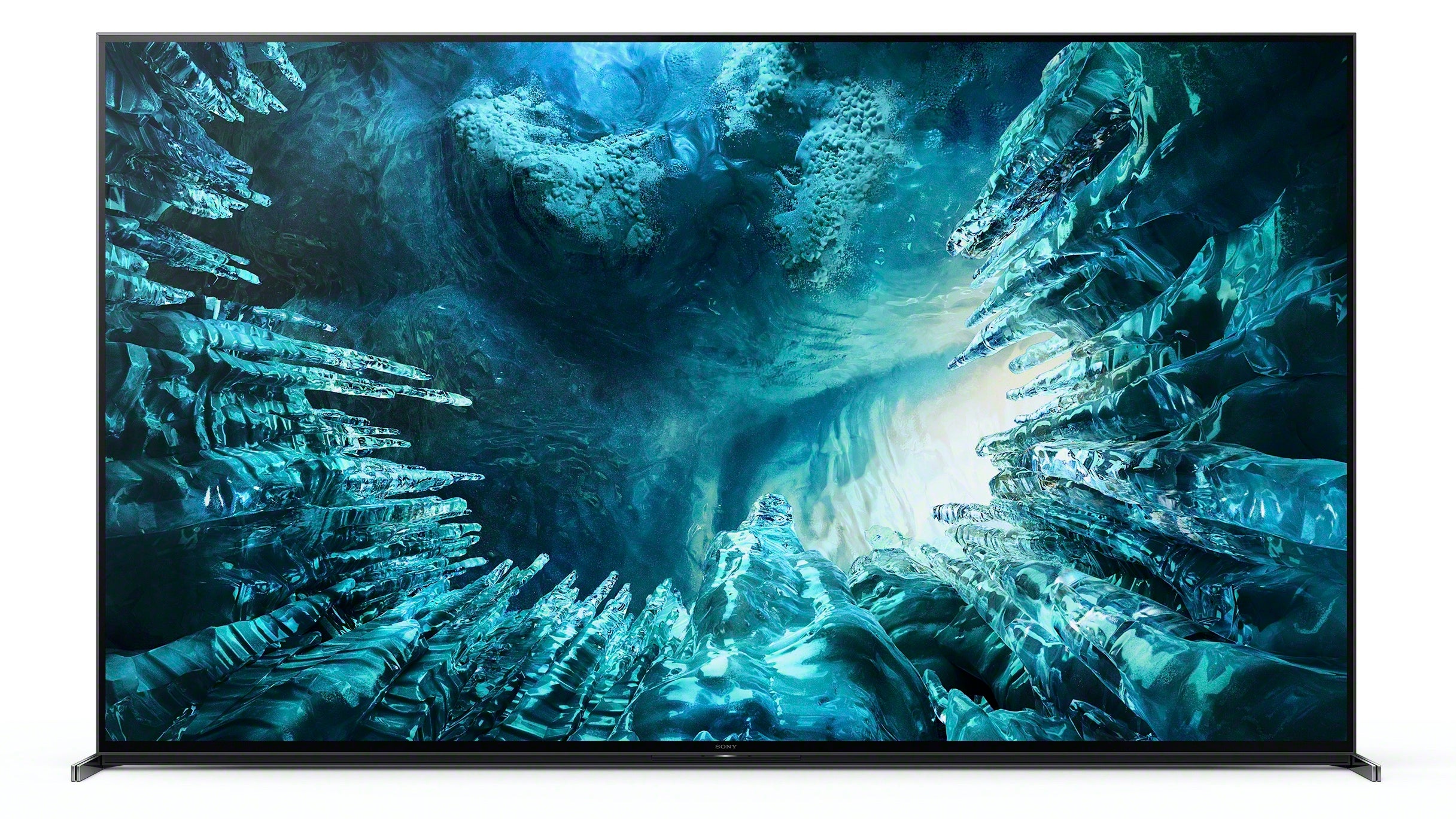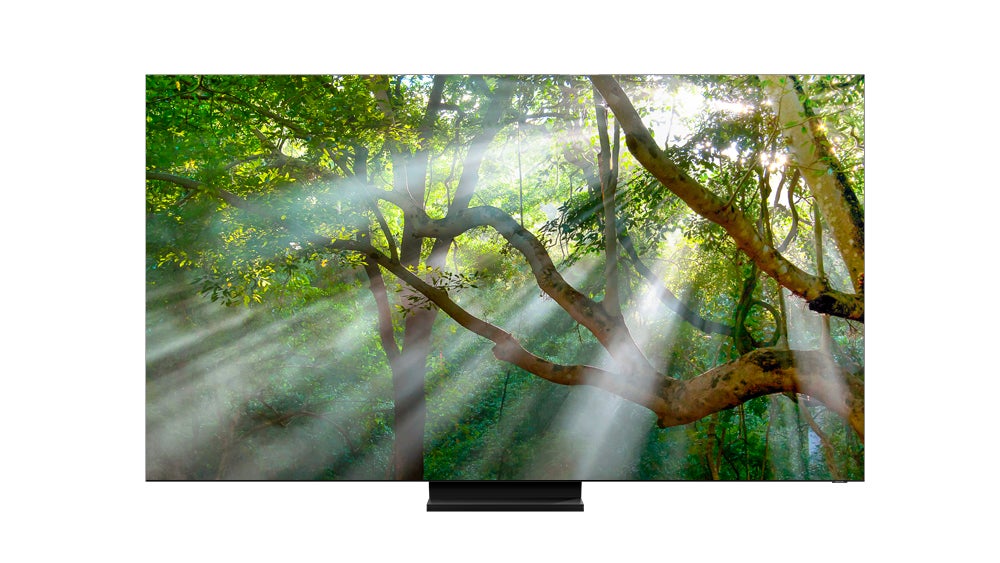Samsung QE65Q95T Review
Samsung QE65Q95T Review
It might not be as high end as the 2019 Q90R, but the Q95T is still a seriously premium performer
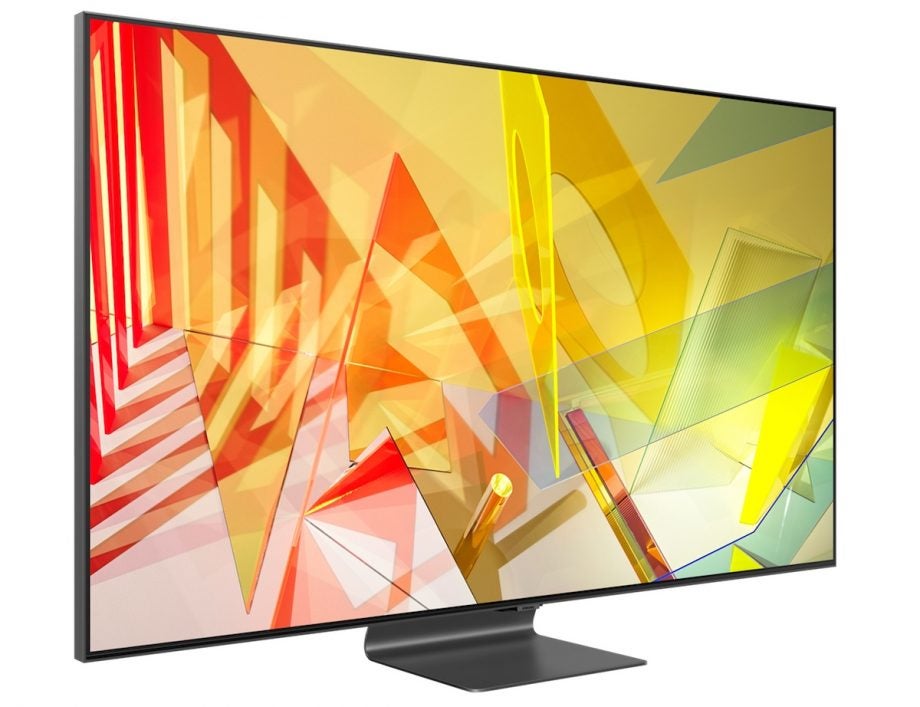
Verdict
Once you get past the fact that the QE65Q95T isn’t a truly direct successor to 2019’s flagship 4K TV and doesn’t support Dolby Vision, its stellar performance quickly soon wins you over. In fact, when all’s said and done, while it may not be cheap, it’s hard to imagine it picture quality being bettered by any other 4K LCD TV coming our way this year
Pros
- Spectacular HDR picture quality
- Powerful and involving sound
- Strong operating sysgtem
Cons
- It's not cheap
- Bright objects can dim quite heavily when they appear against dark backgrounds
- No Dolby Vision support
Key Specifications
- Review Price: £2999
- Native 4K LCD TV
- Full array display with local dimming
- HLG, HDR10 and HDR10+ HDR support
- Quantum Dot colour
- 2000-nit peak brightness
The Samsung QE65Q95T is the Korean brand’s flagship 4K TV for 2020.
It’s a status it justifies with a full-array LED backlight with local dimming, QLED colour technology, Samsung’s latest Quantum Processor 4K video engine, 2000 nits of peak brightness, and a new Object Tracking Sound system.
As we’ll see, though, the QE65Q95T is not quite the direct replacement for last year’s flagship Q90R model you might have expected it to be.
Price and availability
The Samsung QE65Q95T has an RRP of £2999/€2900/AUD$3799. It has similar specs to the Q90T QLED except it comes with the One Connect box that funnels video, audio and power to the TV. The Q95T is not available in the US and Canada, which are served by the Q90T.
Design
-
A hefty looking unit
-
Centrally mounted stand makes it easy for narrow furniture
-
Ships with One Connect box
The Samsung QE65Q95T is a serious hunk of TV. Due in part to its use of direct LED lighting, where the LEDs sit directly behind the screen rather than around its edges, it’s pretty deep around the back and weighs a ton.
It wears its heft well, though. The screen’s bezel is reasonably narrow and minimalistic, the finish is imposing, and the build quality is immense. The way the rear panel is almost as flat as the screen creates a strikingly monolithic profile, too, while the heavy-duty centrally mounted stand makes it easy to rest the TV on even a narrow piece of furniture.
The QE65Q95T ships with two remote controls: One a typical plasticky button-loaded affair, the other a sleek, stripped back metallic ‘smart’ option. Both handsets work well – though if you’re comfortable with talking to your TV, you’ll use the smart one the most, as that’s the only one with a mic button. (Though Samsung has introduced a far-field mic on all its TVs down to the Q70T.)
Unlike the cheaper and otherwise almost identically specified QE65Q90T, the QE65Q95T ships with an external One Connect box. This means only a single cable needs to run into the screen, keeping cable clutter to a minimum.
Also worth noting is Samsung’s Ambient Mode. This puts the TV into a low power mode while the screen shows an artwork, photo or ‘screensaver’ video of your choice.
Features
-
Fewer dimming zones compared to 2019 flagship 4K TV
-
Class-leading gaming performance
-
Comprehensive suite of apps
From its name, you’d expect the Samsung QE65Q95T to be a pretty direct replacement for last year’s award-winning Q90R 4K flagship TV. Actually, it’s arguably more in line in with last year’s Q85R. Particularly since while the Q90R used a mighty 480 separate zones of local dimming control, the Q95T uses just 120.
Samsung’s thinking appears to be that now it has a new ‘entry level’ 8K TV series, the Q800Ts, that sit at similar price points to last year’s Q90Rs, there’s no room left for a premium-specification 4K set.
The drop to 120 zones from the Q90R’s 480 is a big one – and based on the experience of last year’s Q85R, you’d expect it to lead to a substantial reduction in picture quality versus the Q90R especially when it comes to the issue of blooming, where backlight clouds can appear around bright objects presented against dark backdrops. However, the QE65Q95T has an ace up its sleeve: Samsung’s new backlight power management system.
Already witnessed in action to spectacular effect on Samsung’s flagship Q950TS 8K TV, this new system diverts power intelligently from dark parts of the image that don’t need it, to bright parts that do.
Samsung isn’t the only LCD brand to employ this idea, but it worked particularly well on the 75Q950TS. So hopefully it will work well with the relatively low number of dimming zones in the QE65Q95T, too.
As with all of Samsung’s QLED TVs, the QE65Q95T uses metal-clad Quantum Dots to produce a wider colour volume than standard LCD filters. Processing, meanwhile, comes courtesy of Samsung’s latest Quantum Processor 4K, including its AI elements for better upscaling of sub-4K sources. Plus there’s Samsung’s new Adaptive Picture technology, which intelligently adjusts HDR pictures so that they retain their impact even in bright rooms.
Gaming features kick off with a class-leading low input lag figure of 9.4ms. There’s also an automatic low latency mode (ALLM) switching when a game source is detected, and variable refresh rate (VRR) support via the FreeSync system.
A Dynamic Black Equaliser, meanwhile, elevates the brightness of dark areas of gaming graphics without affecting bright parts, to help you spot enemies hiding in dark corners. Which absolutely is not cheating, obviously.
A Game Motion Plus option lets you sacrifice around 11ms of input lag in return for a modicum of motion processing, to reduce judder when playing games that aren’t dependent on ultra-fast reactions. And finally, on the gaming front, there’s a Game sound mode that ramps up sound effect placement and surrounds sound acoustics to boost the feeling that you’re right in the middle of the gaming action.
The Samsung QE65Q95T supports the HDR10, HDR10+ and HLG HDR formats. The brand continues not to support the Dolby Vision format, despite it becoming increasingly widespread.
Smart features are provided by the latest iteration of Samsung’s Eden platform, which continues to impress with its economy, customisation, and comprehensive suite of apps. Including the most recent big hitters of Disney Plus, Apple TV and Apple Music.
You can now scroll down from the home screen icon row to bring up lots of themed content ‘decks’. These include things such as live TV shows, highlights from various catch-up and on-demand services, and themes such as Star Wars and James Bond films. The only issues with Eden are adverts appearing on the home icon ‘bar’, and Samsung’s lack of support for Freeview Play for the UK’s main catch up services.
Voice control now includes Samsung’s own Bixby platform, built-in Amazon Alexa and Google Assistant.
The Q95T also has some interesting new audio features up its sleeve. A so-called Object Tracking System combines object-based audio processing and speakers built into the screen’s top and bottom edges to help sound effects appear in the right place on the screen. So if a wave crashes in from right to left, you should hear its sound cross the screen.
There’s also an Intelligent sound option that adjusts the audio output to suit the content you’re watching and your room, and an automatic voice amplifier that can boost vocals if it detects lots of ambient noise in your room.
Connections, finally, include three USBs and four HDMIs. These HDMIs support eARC for lossless Dolby Atmos pass-through and one of them is a 2.1 version able to support 4K/120Hz in RGB 4:4:4 10-bit. Enough for the best graphics being promised by the next generation of consoles. Though it’s a shame, there aren’t two such high-bandwidth HDMIs given that there are two next-gen consoles.
Set-up
-
Movie preset is much improved
-
Auto Motion creates side effects with motion
-
Includes Adaptive AI picture modes
While the Samsung QE65Q95T’s Movie preset is, like that of the Q950TS, much improved over last year, I think this model delivers the best all-round results in its Standard or Natural presets. Though in the case of Natural, in particular, you might want to nudge the Shadow Detail adjustment up to reduce detail crushing in dark areas.
I’d recommend turning off all noise reduction when watching native 4K and good quality HD content. Though the MPEG NR can help with heavily compressed HD broadcasts or streams.
I’d also recommend not relying on Samsung’s Auto motion setting, as it tends to generate a few too many unwanted side effects. It’s better to choose the Custom option and set the judder and blur to below five. Feel free to also try Samsung’s LED Clear Motion system when watching films, which introduces black frame insertion to make 24 frames a second images look more cinematic. For me, though, this makes the image look too flickery.
Finally, I’d suggest activating the Adaptive Picture Intelligent Mode for daytime viewing of HDR content, but turning it off again if you’re watching an HDR film or TV show in a dark room.
Note that if you’re not thinking of getting your TV calibrated, you may prefer to change the Standard and Natural Modes’ colour tone from Standard to Warm when watching films.
Performance
-
Surprisingly good black levels for an LCD TV
-
Bright HDR performance
-
OTS+ audio isn’t as good as Q950TS 8K TV
The Samsung QE65Q95T does a pretty remarkable – though not quite flawless – job of making you forget its many fewer dimming zones compared to the Q90R.
I tried to catch it out from the off with a range of infamously difficult scenes for LCD TVs to handle. But it impressed me every single time.
With the Patrick Hockstetter sewer sequence on the 4K Blu-ray of It, the QE65Q95T’s backlighting impresses in three key ways. First, black levels in the darkness around Patrick as he searches the sewers by the light of his cigarette lighter look remarkably deep. Every bit as deep as those of last year’s Q90R, and actually deeper than the black levels with the same scene on some 2019 OLED models.
Second and even more surprisingly, the amount of backlight blooming around Patrick’s figure and the skylight he walks past at one point is remarkably faint. Not completely invisible, but so faint that it’s barely noticeable unless you’re really looking for it. And don’t forget that we’re talking here about some of the most extreme and challenging HDR imagery around.
Third, backlight stability is outstanding. The It sewer sequence is renowned for causing LCD backlight engines to flicker and jump, but the QE65Q95T’s backlight remained rock solid at all times. Seriously impressive stuff.
There’s no recurrence in any picture preset, either, of the disappearing ‘Replicant’ word during the introductory text of Blade Runner 2049 that’s still an issue with the Q90R.
Making the Q95T’s black level and backlight performance all the more startling is that it’s achieved on a screen capable of delivering a measured peak brightness (for brief periods of time) of 2,014 nits on a white HDR window covering 10% of the screen area. This is only achieved in the TV’s Dynamic picture preset, though. With the much better Standard, Natural and Movie options you get much more stable 1518, 1162 and 1300 nits respectively (though in Movie mode the brightness starts lower, at around 990 nits, and ramps up to 1300).
This means the reduced number of backlights is still pumping out broadly the same brightness delivered by the Q90R’s 480 zones.
Not surprisingly, these sorts of light output give bright HDR content phenomenal punch and vibrancy. There’s much more raw HDR impact in bright scenes than you can get from brightness-limited OLED screens (which, of course, have different advantages of their own).
With so much brightness around, it’s no surprise to find the Samsung QE65Q95T serving up some seriously potent, high-volume colours. This, again, is one area where a premium LCD can reach further into the capabilities of HDR than OLED screens can.
The QE65Q95T’s pictures are extremely sharp and detailed with native 4K content. Slightly more so, in fact, than they were on last year’s Q90R. There’s slightly more clarity in skin, hair, clothing and other classic areas of fine detail.
This extra clarity may be a result of the QE65Q95T joining the recently tested QE75Q950TS in refining Samsung’s wide viewing angle technology. While that technology delivered almost OLED-like viewing angles, the way it worked did compromise fine detail a little. With the QE65Q95T you get a little contrast reduction and blooming creeping in when the screen is viewed from more than 30 degrees off-axis, but a crisper, more detailed picture. How much the reduced viewing angles matter to you will depend largely on your room layout. But for most people, I’d say Samsung’s more balanced viewing angle approach delivers a sensible compromise.
Motion, meanwhile, is handled well if you follow the advice in the set-up section, and the set’s upscaling of sub-4K content is outstanding, adding lots of natural detail while simultaneously filtering out noise.
The Samsung QE65Q95T’s pictures are typically a stunning sight to behold. A true home entertainment spectacle. But that’s not to say there aren’t still a few niggles to report.
First, while backlight blooming is remarkably well contained, the set only achieves this by reducing the brightness of stand-out light objects pretty heavily at times. So, for instance, where a white piece of text or something like a streetlight stands against a very dark background, it appears much less brightly than it would be on a self-emissive OLED display. In fact, notwithstanding the missing Replicant text mentioned earlier, last year’s Q90R also retained more intensity with bright objects against dark backgrounds than the QE65Q95T does.
The relatively low brightness of light objects against dark backdrops can also lead to dark colours losing some lustre, which can mean they occasionally lack a little volume versus bright tones.
Next, while typical backlight blooming is rare, the lack of dimming zones relative to last year’s Q90R can impact the sense of depth and contrast in mid-dark shots a little as the LEDs can’t distinguish light variations across such complex images with quite as much subtlety.
The most all-round satisfying picture settings lose a little shadow detail in very dark areas too. And finally, activating the Game mode seemingly requires the 65Q95T to seriously ramp down its local dimming features. So black levels take a hit, and areas of blooming where they appear are much larger and therefore more noticeable.
Motion also becomes pretty juddery in straight Game mode. But the new Gaming Motion option helps this without adding as much lag as you would expect.
On the upside, in Game mode, bright objects appearing against dark backgrounds are scarcely dulled down at all. But overall, I can certainly imagine some people opting to play games that don’t rely on ultra-fast reactions with a normal video picture setting, to retain the best graphical quality.
As you’d expect given that it has fewer speakers to play with, the Samsung QE65Q95T’s Object Tracking Sound system isn’t quite as precise and effective as that of the QE75Q950TS at positioning sound in exactly the right part of the screen. That said, it’s more effective in this respect than any straight stereo TV. Or even most Dolby Atmos TVs that don’t have ‘top’ speakers to work with. At the very least there’s a sense both of sound coming from the top as well as the bottom half of the screen, and clear horizontal audio tracking across the screen.
The sound has far more forward projection and impact than it did on any of last year’s Samsung models, too. Especially if you activate the Amplify sound mode. Note, though, that the Amplify mode on the Q95T isn’t as effective as it was on the Q950TS since while it widens the soundstage and increases the sound’s aggression, it can also cause dense soundtrack moments to sound muddier and less precise, and push the bass drivers into some buzzing distortion.
You should buy it if…
-
You want bright HDR pictures
Samsung’s QLEDs can brighter than OLEDs, delivering sensationally punchy but also contrast-rich HDR pictures.
-
You want class-leading gaming
No TV manufacturer delivers input lag as fast as Samsung’s TVs can.
-
You watch TV in a bright room
The Samsung QE65Q95T can go substantially brighter than OLED TV while still providing surprisingly deep black levels.
You shouldn’t buy it if…
-
You’re not interested in the One Connect box
If you don’t mind a marginally chunkier design and can live without an external connections box, the Samsung QE65Q90T is available for less.
-
You want OLED’s black levels and contrast instead
OLED can’t go as bright, but its self-emissive display still produces better black levels, contrast and wider viewing angles.
FAQs
This TV does have an HDMI 2.1 port which is required for 4K/120fps gaming on next-gen consoles
The Samsung QE65Q95T supports the HDR10, HDR10+ and HLG HDR formats.
Specs
How we test televisions
We test every TV we review thoroughly over an extended period of time. We use industry standard tests to compare features properly. We’ll always tell you what we find. We never, ever, accept money to review a product.
Trusted Score
Score in detail
-
Features 9
-
Value 8
-
Smart TV 9
-
Image Quality 9
-
Design 8
-
Sound Quality 9
Features
| Size (Inch) | 65 |
| Display Type | LED |
| Max. Resolution | 3840 x 2160 |
| Full HD 1080p | Yes (actually 4K) |
| Digital Tuner | Yes |
| Freeview HD | Yes |
| 3D Ready | No |
| Refresh Rate (Hertz) | 100 (native) |
Connectivity
| HDMI | 4 |
| Digital Audio Out | Yes (optical) |
| Headphone | Yes (Bluetooth only) |
| Ethernet | Yes |
| WiFi | Yes (built in) |
Physical Specifications
| Height (Millimeter) | 828 |
| Width (Millimeter) | 1447 |
| Depth (Millimeter) | 35 |
| Weight (Gram) | 26200 |
Jargon buster
HLG (Hybrid-Log Gamma)
HLG is a HDR format co-developed by the BBC and Japanese national broadcaster NHK for transmission of broadcast and live streamed content in HDR. It’s backwards compatible with SDR transmission standards, enabling people without a HDR TV to receive the same feed but downsampled.
Filmmaker Mode
Filmmaker Mode is a picture mode supported by some TV manufacturers that disables post-processing features (e.g. motion smoothing), and preserves the correct aspect ratios, colours and frame rates that respects the original author’s creative intent.
Upscaling
Upscaling refers to the process whereby a TV receives an image lower than its native resolution and fills in the missing information to create an image. Upscaling effectively guesses which pixels go where to make up the new image. The better the upscaler, the better the resulting image and with the advent of artificial intelligence, it has helped to make for more sophisticated guesses.
HDR10+
HDR10+ is a HDR format supported by Panasonic and Samsung as a free to use, open platform alternative to Dolby Vision. It adds dynamic metadata on top of the core HDR10 signal that tells a TV how it should adjust the brightness, colours and contrast of content for the most optimal picture quality.
QLED
QLED stands for Quantum-dot Light Emitting Diode. It’s a display technology that uses small particles (called Quantum Dots) made up of slightly different sizes that produce different wavelengths (colours) when light is shone through them. This filter helps to emit a brighter and wider gamut of colours than a conventional LED TV is capable of.
FALD
FALD stands for Full Array Local Dimming and is a more advanced version of Local Dimming technology. It divides a TV’s screen into zones where contrast/black levels can be controlled. In theory, the more zones there are, the more control over black levels and contrast there can be, resulting in a more dynamic looking picture.
HDR
HDR stands for High Dynamic Range and refers to contrast (or difference) between the brightest and darkest parts of an image. HDR content preserves details in the darkest and brightest areas of a picture, details that are often lost in old imaging standards. HDR10 is mandated to be included on all HDR TVs. It’s also supported by 4K projectors.
Q-Symphony
Q-Symphony combines a TV and soundbar speakers to play sound at the same time. They work in concert to track objects across the screen and produce a bigger soundstage. This is only supported by specific Samsung soundbars and premium QLED TVs.
Smart TV
A smart TV can connect to the internet, allowing them to stream online content over home Wi-Fi, connect to other devices (on the same network), as well as allowing the user wirelessly ‘cast’ content to the TV
OTS
OTS stands for Object Tracking Sound and is an audio technology created by Samsung available in their premium QLED TVs. It’s made up of speakers (both physical, and in some cases virtual) in the top, sides and bottom of a TV that can more accurately track objects on the display.
eARC
eARC (Enhanced Audio Return Channel) is the update to ARC and it boosts the bandwidth and speed, making room for object-based audio surround formats such as DTS:X and Dolby Atmos to be sent directly to an AV receiver/soundbar.

